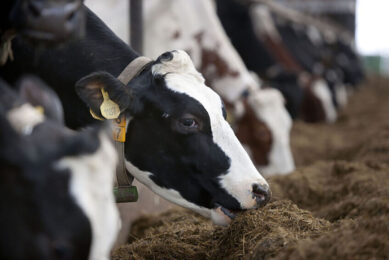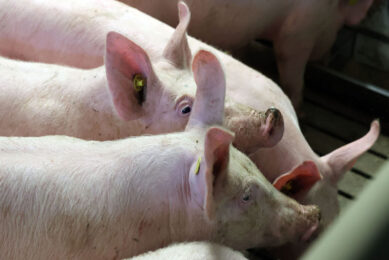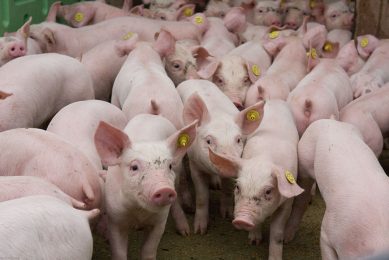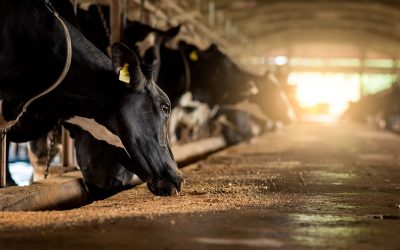Benefits of calcium in prepartum diets for dairy cows
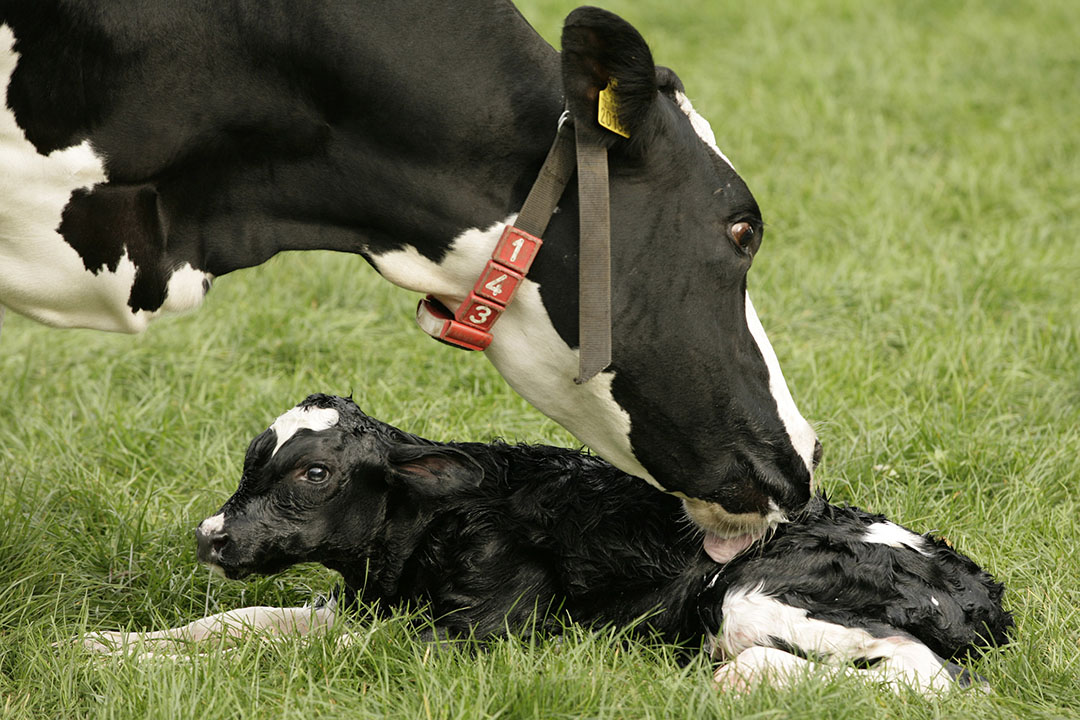
Achieving an appropriate calcium balance in dairy cows is critical near calving, but not only to ensure a healthy transition to lactation.
According to a new study from the University of Illinois, calcium added to acidified prepartum diets can improve a whole suite of postpartum outcomes, including lower rates of uterine infection and quicker return to ovulation.
“We know that calcium metabolism in dairy cows is very important. There’s research saying that 50% of multiparous cows [those on their second or third pregnancy] suffer some sort of deficiency of calcium,” says Phil Cardoso, associate professor in the Department of Animal Sciences at Illinois.
Cardoso explains that the common practice of feeding an acidified diet prior to calving forces the cow to manufacture and redistribute calcium from her bones. This activation of internal calcium production carries the cow through to lactation, when she resumes consuming calcium in her diet.
DCAD diets
Producers commonly feed negative DCAD diets in the weeks before calving, usually supplemented with a small amount of calcium (1% of dry matter). The practice is typically enough to avoid full-blown milk fever, or clinical symptoms of calcium deficiency. But Cardoso says there has been little guidance on how much to acidify the diet to remobilise the optimal amount of calcium and avoid excretion in the urine. He also says no one has tested the effects of adding different concentrations of dietary calcium to the fully-acidified DCAD diet.
Webinar on demand: Calcium, the double-edged sword – view now
“Calcium is important for many cellular processes. Without adequate calcium concentrations, tissues don’t work optimally and are subject to inflammation and susceptible to disease. We wanted to test whether an increased amount of calcium — 2% of DM — added to an acidified diet during the last month of pregnancy could prevent those issues and lead to more favourable reproductive outcomes,” Cardoso says.
Study: 3 diets
His team fed 76 multiparous Holstein cows one of three diets in the month before calving: a control, non-acidified DCAD diet with no added calcium; an acidified DCAD diet (-24 milliequivalents per 100g of dry matter) with no added calcium; and an acidified DCAD diet (-24 milliequivalents) with added calcium at 2% of dietary dry matter. The DCAD formulation was mixed with typical forages and corn silage in prepartum diets. After calving, all cows were switched to a typical postpartum diet with 1% of dietary dry-matter calcium.
The researchers then monitored changes in the blood, uterus, ovaries, and pregnancy status at two and four weeks post-calving. “There was a tendency for cows fed the negative DCAD + calcium diet to get pregnant at a higher rate than cows fed the control diet, but we need to test that in a larger population to be sure of that result,” Cardoso says.
That could be why we saw better pregnancy rates,” – Phil Cardoso, associate professor in the Department of Animal Sciences at Illinois.
Less ovulation time
What he is sure of is that cows fed the diet with added calcium took less time to ovulate and had lower levels of uterine infection than cows on the other diets. This was likely due to the fact that cows on the calcium-added diet had more tight junction proteins in the uterine lining; these proteins bind adjacent cells, preventing a “leaky” tissue that could allow pathogens to enter the bloodstream during calving. “Ours is the first study showing tight junction proteins even exist in the uterus of the dairy cow, and also clearly indicates that added calcium improves their number and function,” Cardoso says.
Cows fed the calcium-added diet also had more favourable disease-fighting antioxidants in the blood and more glands in the uterine lining, which keep the organ clean and produce hormones that can kick-start ovulation. “That could be why we saw better pregnancy rates,” Cardoso says.
Also read: Impact of granule size of calcium salts
Adding calcium
He points out that many producers have been using a negative DCAD strategy for decades, but aren’t acidifying the diet enough, taking it to only -5 milliequivalents and not adding calcium, or adding it at only 1% of dietary dry matter. “We are saying that you need to go to -20 milliequivalents and up to 2% of dietary dry matter for calcium,” he says.The message to the dairy industry is clear: A negative DCAD diet with added calcium is helpful not only to get through the transition to lactation. It can help improve future pregnancy outcomes in the herd. Cardoso wants to get the message to both nutritionists and veterinarians, who he‘d like to see talking to each other more often to create strategies for improved reproduction.
Source: Sciencedaily.com




